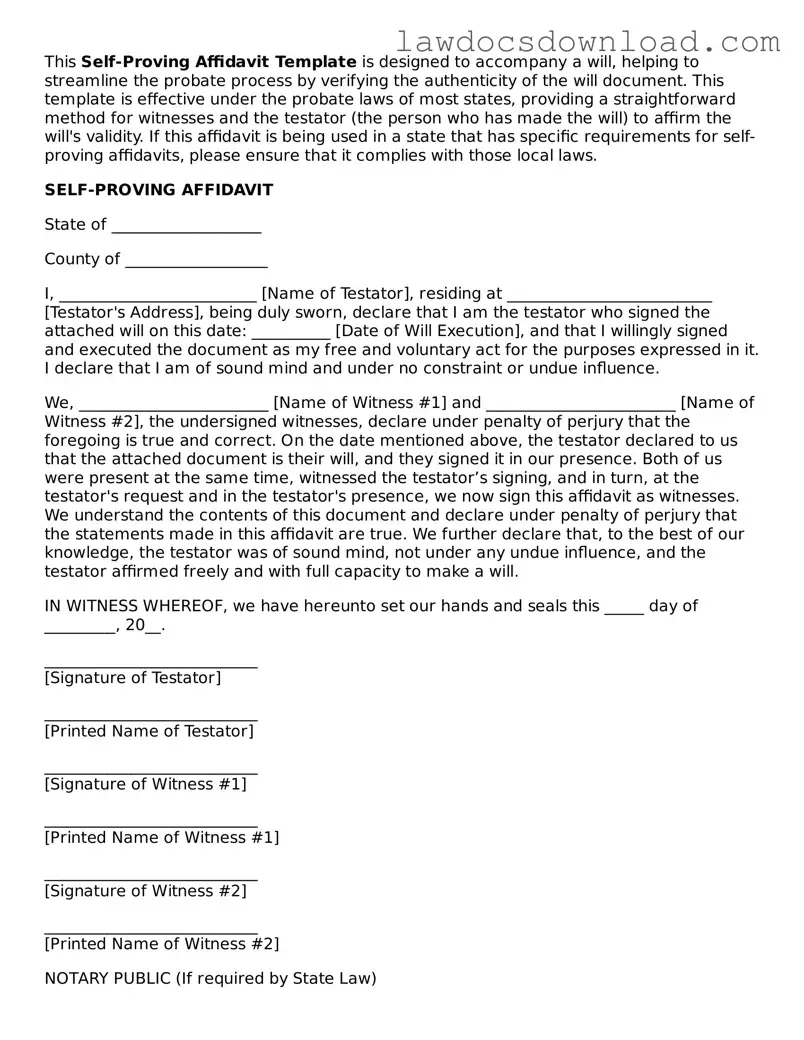This Self-Proving Affidavit Template is designed to accompany a will, helping to streamline the probate process by verifying the authenticity of the will document. This template is effective under the probate laws of most states, providing a straightforward method for witnesses and the testator (the person who has made the will) to affirm the will's validity. If this affidavit is being used in a state that has specific requirements for self-proving affidavits, please ensure that it complies with those local laws.
SELF-PROVING AFFIDAVIT
State of ___________________
County of __________________
I, _________________________ [Name of Testator], residing at __________________________ [Testator's Address], being duly sworn, declare that I am the testator who signed the attached will on this date: __________ [Date of Will Execution], and that I willingly signed and executed the document as my free and voluntary act for the purposes expressed in it. I declare that I am of sound mind and under no constraint or undue influence.
We, ________________________ [Name of Witness #1] and ________________________ [Name of Witness #2], the undersigned witnesses, declare under penalty of perjury that the foregoing is true and correct. On the date mentioned above, the testator declared to us that the attached document is their will, and they signed it in our presence. Both of us were present at the same time, witnessed the testator’s signing, and in turn, at the testator's request and in the testator's presence, we now sign this affidavit as witnesses. We understand the contents of this document and declare under penalty of perjury that the statements made in this affidavit are true. We further declare that, to the best of our knowledge, the testator was of sound mind, not under any undue influence, and the testator affirmed freely and with full capacity to make a will.
IN WITNESS WHEREOF, we have hereunto set our hands and seals this _____ day of _________, 20__.
___________________________
[Signature of Testator]
___________________________
[Printed Name of Testator]
___________________________
[Signature of Witness #1]
___________________________
[Printed Name of Witness #1]
___________________________
[Signature of Witness #2]
___________________________
[Printed Name of Witness #2]
NOTARY PUBLIC (If required by State Law)
State of ___________________
County of ___________________
On this _____ day of _________, 20__, before me appeared ______________________ [Name of Testator], ____________________ [Name of Witness #1], and ______________________ [Name of Witness #2], known to me to be the persons whose names are subscribed to the above affidavit, and they acknowledged that they executed the same for the purposes therein contained.
IN WITNESS WHEREOF, I have hereunto set my hand and official seal.
___________________________
[Signature of Notary Public]
___________________________
[Printed Name of Notary Public]
My Commission Expires: ___________
